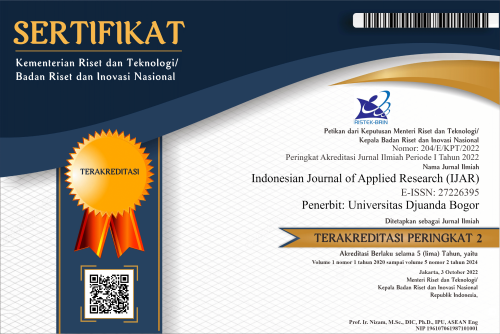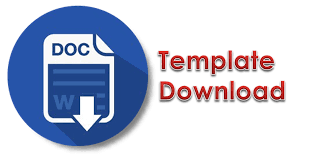Problemsof Local Floods and Their Relation to Bogor City Drainage Infrastructure System
Abstract
Highland areas are not necessarily without flood problems, especially local flooding. The problem of poor drainage can be the cause of a local flood, as happened in Bogor City, West Java. Development evaluation related to local flooding in a city is an exciting topic to study further. The purpose of this evaluation is to answer the need for public information about the philosophy of flooding in the highlands, existing policies, and factors causing local flooding in Bogor City. The benefits of this analysis can also provide policymakers with input on strategic steps in the planning of urban drainage infrastructure systems, both in terms of physical channels, social approaches, and aspects of land carrying capacity within the ecological framework. The method used in this evaluation is in the form of literature studies and direct field observations of Bogor City's drainage infrastructure at specific points. The recommendation for the Bogor City government is to carry out comprehensive data collection and re-topography, namely by collecting data on buildings and drainage, determining the slope and height of the channel, and implementing risk management at each stage of its implementation. In addition, strict supervision and community participation in overseeing the development process and reducing waste disposal in the river supports the improvement of drainage development.
References
Afiah, L. M. (2018). Risiko Bencana Banjir Terhadap Pemanfaatan Ruang Di Kecamatan Tanah Sareal Kota Bogor. Jurnal Online Mahasiswa (JOM) Bidang Perencanaan Wilayah & Kota, 1(1).
Atmodjo, P. S., Sangkawati, S., & Setiaji, A. B. (2015). Analisis Efektivitas Jalur Evakuasi Bencana Banjir. Media Komunikasi Teknik Sipil, 21(1), 23–34.
Bappeda Kota Bogor. (2015). Pemutakhiran Strategi Sanitasi Kota Bogor (Updating the City Sanitation Strategy for the City of Bogor). Bogor: Pemerintah Kota Bogor
Batu, J. A. J. L., & Fibriani, C. (2017). Analisis penentuan lokasi evakuasi bencana banjir dengan pemanfaatan sistem informasi geografis dan metode simple additive weighting. Jurnal Teknologi Informasi Dan Ilmu Komputer (JTIIK) p-ISSN, 2355, 7699.
GoI. (2019). Bogor Mayor Regulation Number 139 of 2019 concerning the Bogor City Drainage Master Plan (Peraturan Wali Kota Bogor Nomor 139 Tahun 2019 Tentang Rencana Induk Drainase Kota Bogor). Jakarta: Government of Indonesia
GoI. (2014). Indonesia Minister Regulation of Publik Works Number 12 Year 2014 concerning the Urban Drainage System Operation (Peraturan Menteri Pekerjaan Umum Nomor 12 Tahun 2014 tentang Penyelenggaraan Sistem Drainase Perkotaan). Jakarta: Government of Indonesia
GoI. (2007). Indonesia Law Number 24 Year 2007 concerning Disaster Management (Undang-undang Nomor 24 Tahun 2007 tentang Penanggulangan Bencana). Jakarta: Government of Indonesia
Halim Hasmar, H. (2002). Drainase Perkotaan.
Nguyen, T. T., Ngo, H. H., Guo, W., Wang, X. C., Ren, N., Li, G., Ding, J., & Liang, H. (2019). Implementation of a specific urban water management-Sponge City. Science of the Total Environment, 652, 147–162.
Pambudi, A. S. (2019). Water Price Calculations in Concept Of Environmental Service: A Case in Cimanuk Watershed. Jurnal Perencanaan Pembangunan: The Indonesian Journal of Development Planning, 3(3), 325–337.
Pambudi, A. S. (2020). System dynamics modelling of deforestation rate and forest rehabilitation in the upstream of Ciliwung Watershed, Bogor Regency. Jurnal Perencanaan Pembangunan: The Indonesian Journal of Development Planning, 4(3), 327–346.
Pambudi, A. S. (2021a). Overview and evaluation of the Indonesia’s water resources management policies for food security. Applied Environmental Studies, 84.
Pambudi, A. S. (2021b). Review Of The Kineros Model For Predicting The Effect of Land Use on The Surface Run-Off. Indonesian Journal of Applied Research (IJAR), 2(3), 160–169.
Permadi, M. G., Tjahjono, B., & Baskoro, D. P. T. (2018). Identifikasi daerah risiko bencana longsor di Kota Bogor. Jurnal Ilmu Tanah Dan Lingkungan, 20(2), 86–94.
Pujiastuti, R. (2017). The Initial Step for Developing Sustainable Urban Drainage System in Semarang City-Indonesia. Procedia Engineering, 171, 1486–1494.
Rahman, F. N., & Wardhani, E. (2020). Pemilihan Prioritas Penanganan Banjir Di Kecamatan Bogor Tengah Kota Bogor Provinsi Jawa Barat. Serambi Engineering, 5(2), 1034–1042.
Ramdhan, M., Arifin, H. S., Suharnoto, Y., & Tarigan, S. D. (2018). Towards water sensitive city: Lesson learned from Bogor flood hazard in 2017. 31, 09012.
Rufina, A., Wardhani, E., & Sulistyowati, L. A. (2019). Analisis Penentuan Skala Prioritas Genangan atau Banjir Di Kecamatan Bogor Selatan. Jurnal Teknologi Lingkungan Lahan Basah, 7(2), 81–91.
Sebastian, L. (2008). Pendekatan pencegahan dan penanggulangan banjir.
Yang, W., & Zhang, J. (2021). Assessing the performance of gray and green strategies for sustainable urban drainage system development: A multi-criteria decision-making analysis. Journal of Cleaner Production, 293, 126191.
Copyright (c) 2022 Indonesian Journal of Applied Research (IJAR)

This work is licensed under a Creative Commons Attribution-ShareAlike 4.0 International License.
The Authors submitting a manuscript do so on the understanding that if accepted for publication, copyright publishing of the article shall be assigned/transferred to Indonesian Journal of Applied Research (IJAR) Universitas Djuanda as Publisher of the journal. Upon acceptance of an article, authors will be asked to complete a 'Copyright Transfer Agreement'. An e-mail will be sent to the corresponding author confirming receipt of the manuscript together with a 'Copyright Transfer Agreement' form by online version of this agreement.
Indonesian Journal of Applied Research (IJAR) Universitas Djuanda, the Editors and the Editorial Board make every effort to ensure that no wrong or misleading data, opinions or statements be published in the journal. In any way, the contents of the articles and advertisements published in the Indonesian Journal of Applied Research (IJAR) Universitas Djuanda are sole and exclusive responsibility of their respective authors and advertisers.
Remember, even though we ask for a transfer of copyright, our journal authors retain (or are granted back) significant scholarly rights as mention before.
The Copyright Transfer Agreement (CTA) Form can be downloaded here: Copyright Transfer Agreement-IJAR 2020
The copyright form should be signed electronically and send to the Editorial Office e-mail below:
Prof. Dr. Ir. Dede Kardaya, M.Si. (Editor-in-Chief)
Universitas Djuanda
Jl. Tol Jagorawi No.1, Ciawi, Kec. Ciawi, Bogor, Jawa Barat 16720
Website: http://journal.unida.ac.id/index.php/IJAR/index
Email: ijar@unida.ac.id






 This work is licensed under a
This work is licensed under a 